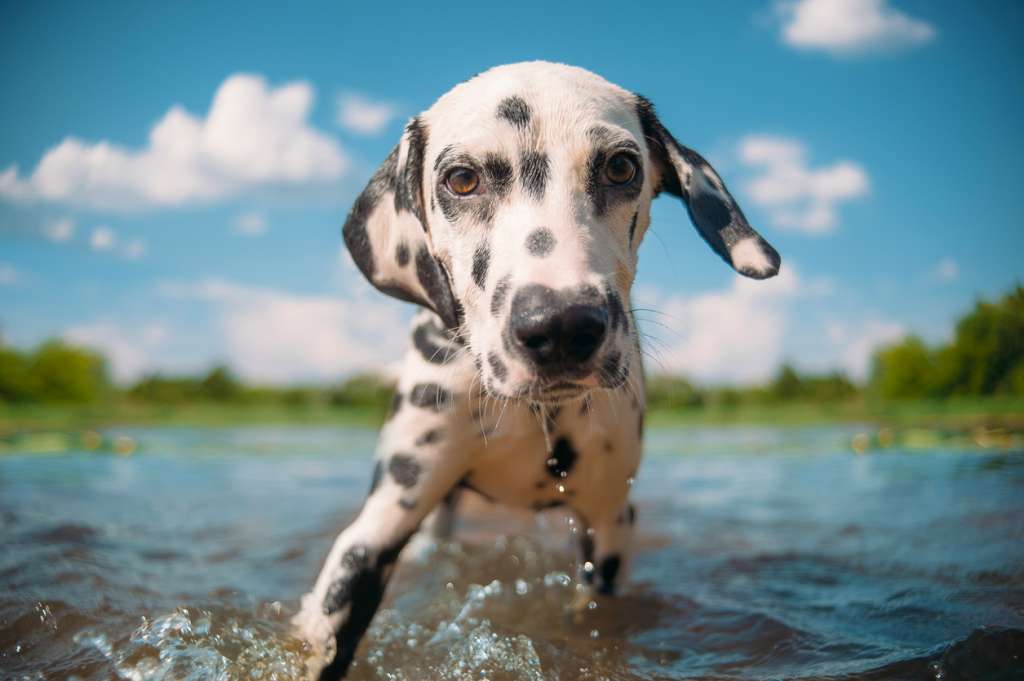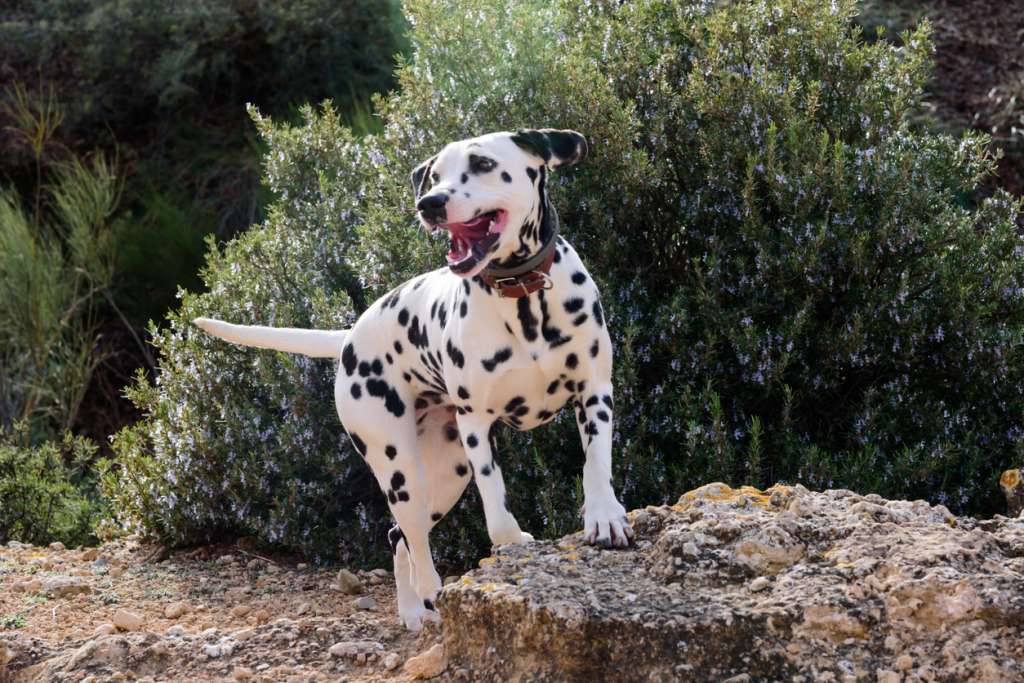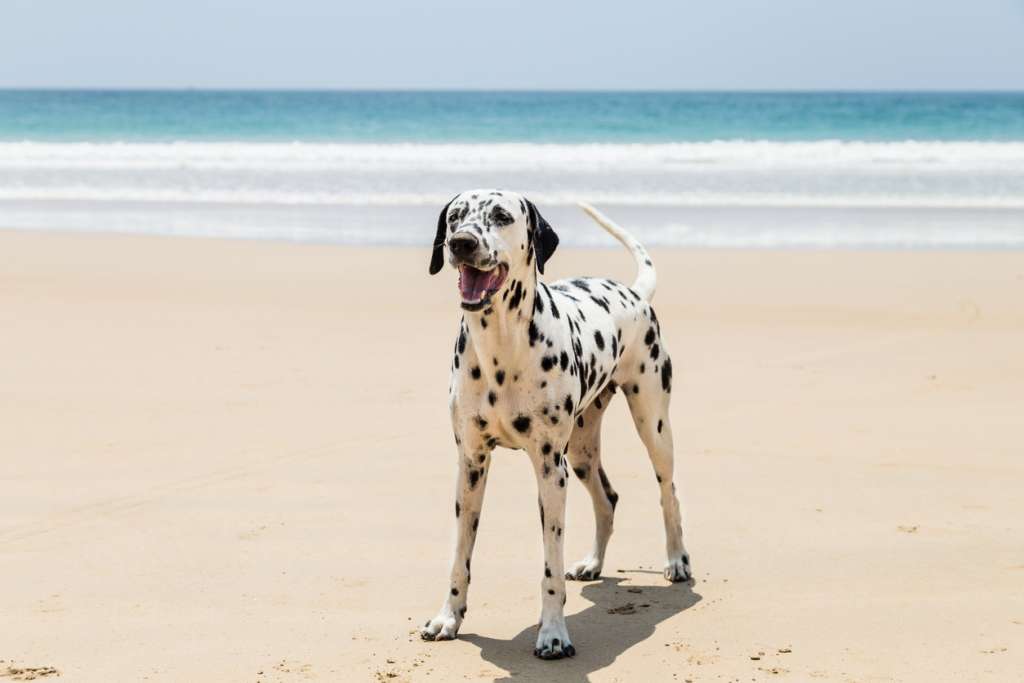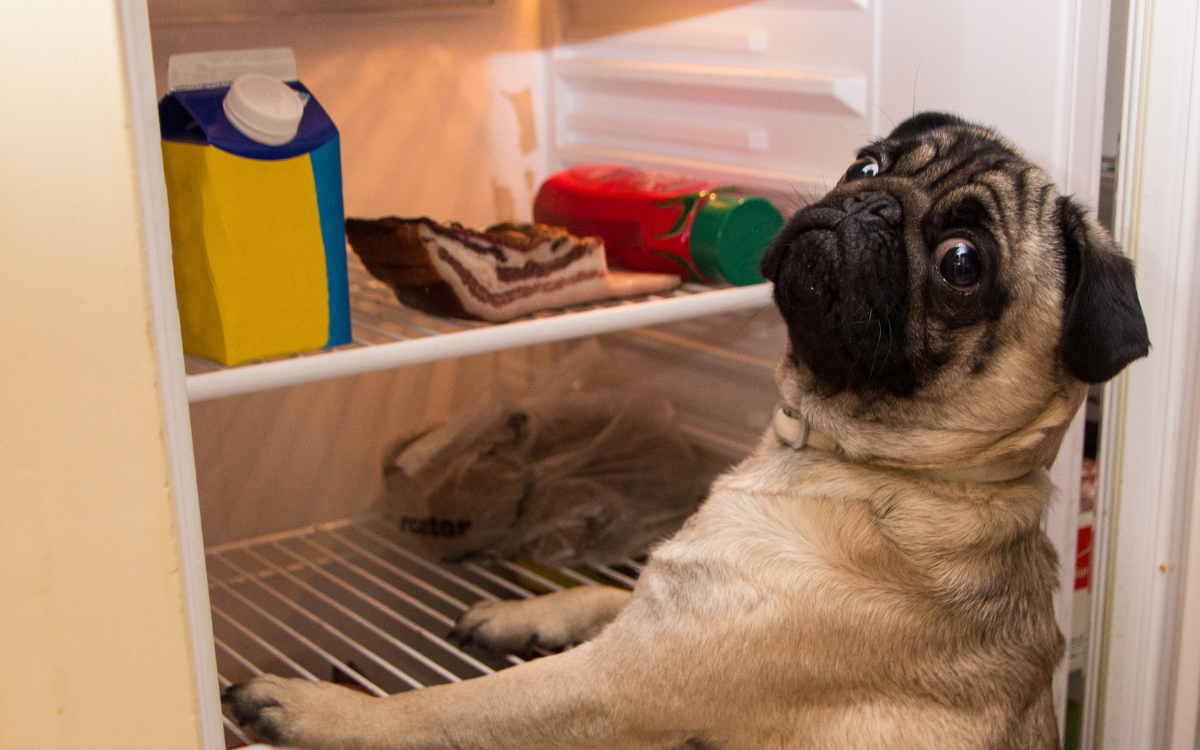For Pups With Short Attention Spans…
Bladder stones can block a dog’s urine stream and become a medical emergency. Dalmatians are especially prone to bladder stones as they commonly carry the recessive SLC2A9 gene mutation, which prevents the liver from being able to convert uric acid to allantoin. Always look for signs of urinary blockage or discomfort in your Dalmatian, and consider a protein-restricted, low sodium diet, if in fact your pup is at risk.
Dalmatians are known for many things. Your first thought may be a proud pup sitting in a fire engine, but for vets, their first thought is… bladder stones. That’s right: among veterinarians, a Dalmatian’s ability to develop urate bladder stones is one of their most notable qualities.
While approximately 1 in 10 Dalmatians actually develops urate stones, most have a genetic predisposition to them and require monitoring(1-2). Bladder stones of any type can result in an emergency life-threatening condition where the animal is unable to pass urine. If you think your pet is unable to urinate, seek veterinary care immediately. And when I say immediately, I mean stop reading and go now! You can finish reading when you know your pet is able to pee.


This article is intended for Dalmatian owners who want to better understand what urate stones are and how they differ from other, more common, urinary stones.
So, What are Urates and How are They Formed?
In a nutshell, urates are a product of the body’s metabolism that form bladder stones when they aren’t processed properly.
When a dog eats food, many nutrients are absorbed and processed by the body. One of those nutrients is purines. Purines are processed in the liver in a four-step process that ends with a waste product called allantoin. Allantoin is then delivered to the kidney, which puts it in the urine to get rid of it. Allantoin is water soluble, which allows it to stay dissolved in urine while waiting for the animal to relieve themself. Smooth sailing so far, right?
Well, problems can happen when purine processing stops on step three instead of going all the way through to step four. Instead of water-soluble allantoin, uric acid is instead delivered to the kidney, which is decidedly NOT as urine-friendly. Uric acid likes to form stones instead of dissolving, which is a problem because the urinary tract is essentially a series of long skinny tubes. One little stone anywhere in the urinary tract can block urine flow entirely and cause a major emergency. Urine is one of the body’s main waste disposal systems, so blockage can quickly cause issues(1-2).


Why is This So Much More Common in Dalmatians?
Dalmatians commonly carry the recessive SLC2A9 gene mutation, which prevents the liver from being able to convert uric acid to allantoin (i.e. move from step three to step four)(1-4). Inheriting this gene from both parents does not guarantee stone formation, it just increases the risk. Diet and other as-yet-unknown factors also influence stone formation. So, knowing if your Dalmatian has the gene does not necessarily define their level of risk. Frustrating, I know!
The good news, for the future of the breed, is that breeders have been working on this for a while. Dalmatians were bred with pointers, and then their puppies were bred back to multiple generations of Dalmatians to produce Dalmatians that are less likely to develop stones (essentially, breeders used pointers to replace the funky Dalmatian urate stone gene). These dogs are now recognized by the AKC as Dalmatians(1). If you are considering getting a new Dalmatian, this may be a good option for you.
Good to Know, But What Can I Do For My Current Dalmatian?
If you can do only one thing, find a veterinarian that is a good fit for you and your dog. They will be an invaluable resource to you at every step, and it’s essential to do the appropriate monitoring listed below.
- Test for urates in blood – this is a good way to identify dogs that may develop urate stones
- Annual or biannual exam with blood and urine tests – detect liver or kidney stress/damage and UTIs, which can increase risk of stone formation
- Radiographs (aka x-rays) with contrast or ultrasound – detect stones in the urinary system. Keep in mind that urate stones, frustratingly, are unlike most bladder stones in that they are invisible on normal x-rays. So you need to do a special kind of x-ray looking specifically for them.
- 24 hour uric acid production – tells how much uric acid your dog is producing in a day, but does require you to collect all their urine for 24 hours(1-2)… not an easy task! Better go buy a ladle, yuck!
- Urate : creatinine ratio – useful in determining if a pet is ingesting anything other than the recommended diet (read more about special diets for Dalmatians below)(1-2).


What Can I Feed My Dalmatian To Help Prevent Urates?
As always, the best thing you can do is try to prevent urates from forming in the first place, so let’s go over some basics when trying to decide what to feed your Dalmatian. Since purines are what are processed into uric acid, a diet low in purines is ideal. Unfortunately, information about purines is not commonly found on food bag labels.
Look for protein-restricted diets, low in sodium. There are multiple prescription foods available for prevention of urate formation, but these are not to be fed to pregnant or growing animals (i.e. puppies). If you have a mature adult, discuss with your vet if a prescription diet is appropriate.
Brewers yeast and vitamin C, often found in joint supplements, are high sources of purines. Low-purine foods include butter, cheese, eggs, fruits, milk, and yeast-free whole grain cereal. Discuss your feeding plan with your veterinarian to make sure your pet’s individual health is considered(1-4).
What Signs/Symptoms Should I Look For At Home?
Any changes to the frequency or comfort of your Dalmatian’s urination should prompt a visit to your vet. Things like increased urination (volume and/or frequency), accidents, straining to urinate (heads up: this often looks like diarrhea because your poor pup is straining so much they produce a BM), blood or grit noticed in urine, or “sputtery” urine streams. Urinary habits and changes are important to know in these cases.
Side note: I cannot tell you the number of times owners have not known what bathroom habits are, or if they have changed, because they have a doggie door. Convenient, sure. Minimize accidents, yep. Still not ideal for pets with urinary issues. You are your pet’s best advocate, but only if you know what is going on.


Stones Were Just Identified In My Dalmatian. What Now?
First, you have to get rid of the existing stones. There are multiple options (surgery, dissolution, flushing the stones, etc.) and which is best for your Dalmatian is very situation-dependent(1-4). Your veterinarian will guide you here, and the options are very similar regardless of what kind of stone they have (Dalmatians can also get normal dog bladder stones – there’s no rule that says they can only get urates!).
Once the stone is gone, strict diet and monitoring is essential (see diet information above). Dogs with a history of stone formation often have their urine pH and USG closely and frequently monitored, because every dog has a different range of conditions where stones like to form. Prevention diets can attempt to limit the building blocks needed to form a stone (purines, in this case), but keep in mind that not every dog responds the same to each diet.
With urate stones, sometimes diet alone is not enough, and the addition of a medication called allopurinol is needed. Allopurinol interrupts purine processing at step three and results in xanthine, which, in combination with restricted diet, prevents stone formation. But be careful: if you cheat with the diet while your pup is on allopurinol, they can develop xanthine stones(1-4). Don’t trade one problem for another. Stick with the diet!
Let’s hope your dalmatian lives a long, healthy, stone free life. If, by chance, your dog is the unlucky 1 in 10, know you can handle this and they can still enjoy full lives with good management!
Colleen Ferriman, DVM, is a canine and feline health, wellness, and illness management advocate. She has a combined 10 years of experience in clinical medicine, education, and educational content development. Colleen graduated from Colorado State University as a Doctor of Veterinary Medicine, has worked as a general practitioner, and has contributed to the development of veterinary educational tools. She is also a member of the American Veterinary Medical Association and American Academy of Veterinary Pharmacology and Therapeutics.
Sources
- Brooks W: Uric Acid Stones and Urate Urolithiasis in Dogs. Veterinary Partner- VIN 2020. https://veterinarypartner.vin.com/doc/?id=4952069&pid=19239
- Rathrock K: Urolithiasis, Urate (Canine). VINcyclopedia of Disease 2022. https://www.vin.com/doc/?id=4953388&pid=607
- Lulich, J.P., Berent, A.C., Adams, L.G., Westropp, J.L., Bartges, J.W., Osborne, C.A. (2016). ACVIM Small Animal Consensus Recommendations of the Treatment and Prevention of Uroliths in Dogs and Cats, Journal of Veterinary Internal Medicine,30, 1564-1574.
- Foster J.D.: New Approaches to Lower Urinary Tract Stones- From Diet to Intervention. Pacific Veterinary Conference 2019. https://www.vin.com/doc/?id=9048935






